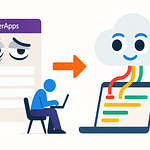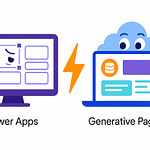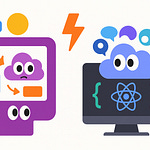The Myth of Mandatory Migration
Why is it that in every digital transformation meeting, someone insists the first step is to migrate everything? As if physical relocation somehow increases intelligence. A file sits peacefully in SharePoint, minding its own business, and then a consultant declares it must be “upgraded” to Dataverse for “future compatibility.” Translation: they’d like another project. You’re told that modernization equals movement, even though nothing’s broken—except, perhaps, your budget.
For years, the myth persisted: that Copilot, Power BI, or any shiny AI assistant needed data that lived elsewhere—somewhere fancier, more “enterprise-class.” SharePoint Lists were treated like embarrassing relatives at a corporate reunion: useful once, but not to be seen in public. The assumption? Too old, too simple, too unworthy of conversational AI.
And yet, quietly—without fanfare—Microsoft flipped that assumption. Copilot Studio now talks directly to SharePoint Lists. No ETL pipelines, no schema redesign, no recreating permissions you already spent months configuring. The connector authenticates in real time, retrieving live data without duplication. Suddenly, the “legacy” tool outsmarts the migration budget.
So today we’re breaking a commandment the IT priesthood refuses to question: thou shalt not move data for no reason. You can keep your lists where they are and still have Copilot read them fluently. Let’s dismantle the migration mirage.
Section 1: The Migration Mirage
Every enterprise has a reflex. Something important appears? Move it to Dataverse. Something large? Fabric, obviously. Something nonstandard? Export it anyway; we’ll clean it later. It’s muscle memory disguised as strategy. Migration has become a ritual, not a necessity—a productivity tax masquerading as modernization.
Consider the sales pipeline that already lives in a SharePoint list. It’s updated daily, integrated with Teams alerts, and feeds a dozen dashboards. But once Copilot entered the picture, someone panicked: “AI can’t use Lists; we’ll have to rebuild it in Dataverse.” Weeks later, the same data exists twice, with half the triggers broken, a few licensing costs multiplied, and no measurable improvement in functionality. Congratulations—you’ve achieved digital motion without progress.
Modernization is supposed to make work easier. Instead, we build data ferries. Information leaves SharePoint, visits Power Automate for translation, docks at Fabric for modeling, and then returns to Teams pretending to be insight. It’s the world’s least efficient round trip.
Let’s count the costs. First, licensing—because Dataverse isn’t free. Every migrated record incurs an invisible tax that someone in finance eventually notices with horror. Next, schema redesign—those column types in Lists never quite map one-to-one. Something breaks, which triggers meetings, which trigger Power Automate rebuilds. The end result: thousands of dollars spent achieving what you already had—a structured table accessible in Microsoft 365.
And the absurdity compounds. Each year brings a new “recommended” platform, shinier than the last, so data hops again: Lists to Dataverse, Dataverse to Fabric, Fabric to some eventual “Unified Lake Platform.” The name changes, the bills persist, the value doesn’t. Users just want their information to answer questions; they never asked for serialized migration.
The truth is brutal in its simplicity: Copilot never needed your data copied—it needed permission to see it. Authentication, not replication. All those hours spent writing connectors and dataflows? They existed to make up for an access gap that no longer exists. The new SharePoint List connector removes the gap entirely.
For the first time, AI in Microsoft’s ecosystem understands the data where it naturally lives. No detours, no middleware acrobatics. It queries your list directly under the same user context you already trust. If you can open a row, so can Copilot. If you can’t, neither can it. Governance remains intact; logic remains simple.
Think about what that means. The endless migration carousel—the expensive dance between platforms—wasn’t driven by technology limits. It was driven by institutional habit. Data migration became a corporate superstition, performed “just in case,” like carrying an umbrella indoors. The enterprise mind equated movement with progress, complexity with sophistication. It never occurred to anyone that simplicity might finally work.
And now, without any ceremony, Microsoft just invalidated all that ritual. No new architecture diagram. No whitepaper claiming “revolution.” Just a quiet update: “SharePoint Lists can now be added as knowledge in Copilot Studio.” That’s it. Five seconds of configuration wiped away entire categories of budget justification.
Governance teams who lived off “data modernization initiatives” now face an existential crisis. Because when information remains where it’s always been—secure, auditable, and instantly accessible—there’s nothing left to migrate. The new challenge isn’t infrastructure; it’s mindset.
So, remember this the next time someone proposes “lifting and shifting” perfectly functional lists. Migration for its own sake isn’t strategy; it’s busywork with branding. Microsoft has made it redundant.
Then, of course, there’s the punchline. After decades of consultants insisting SharePoint Lists were the problem—turns out, Lists were just waiting for Microsoft to stop pretending they weren’t good enough. And now they are.
Section 2: Enter the SharePoint List Connector
Then Microsoft did something uncharacteristic: it made the obvious choice. It stopped trying to rebrand common sense and simply allowed Copilot Studio to read SharePoint Lists directly. No extraneous layers, no “prerelease schema adapter,” just—connect and go. You paste a list URL, authenticate like any normal user, and Copilot immediately treats that list as an authoritative knowledge source. The operation takes less time than it does to argue about whether it’s “best practice.”
Let’s go through this slowly because the sheer simplicity confuses people who are conditioned to complexity. In Copilot Studio, you open your agent, click “Add Knowledge,” choose SharePoint, and two familiar phrases appear: My Lists and Recent Lists. These aren’t marketing reinventions; they mirror exactly what you see in SharePoint itself. My Lists surfaces those you created through the Lists app. Recent Lists shows the ones you’ve visited lately. Microsoft even preserved that little bit of human laziness—your AI can only connect easily to lists you actually use. There’s poetic justice in that.
Once you select a list, Copilot establishes an authenticated connection. It doesn’t copy the data or build an index; it simply references the live list through the same channels you already rely on. When you or a colleague update a record—add a new holiday, change a project deadline—Copilot’s knowledge reflects that instantly. No cache refresh, no waiting on a background indexing job. Real-time isn’t a buzzword here; it’s literal. The AI queries the latest data every single time you ask.
Consider a small demonstration. Your organization’s holiday calendar lives in a SharePoint list that you dutifully ignore until there’s free cake involved. Traditionally, if an assistant or chatbot needed that information, you’d have to export it, convert it, maybe import it into Dataverse, and then pray it synchronized correctly. Now? You just connect the list once. The HR team adds “Labor Day, September 1.” You ask Copilot, “What’s the next company holiday?” It answers instantly—“Labor Day.” No reindexing, no retraining, no “sync in progress.” The list updated, the AI saw it, end of story.
Behind the scenes, the brilliance lies not in new technology but in what Microsoft chose not to do. They didn’t create a parallel data store; they respected your existing one. Copilot operates in the user’s security context, inheriting permissions automatically. If only certain departments can see salary data, then only those users’ instances of Copilot can retrieve it. No elevated service accounts, no security loopholes disguised as convenience. It’s not a shortcut; it’s the correct route we should’ve taken from the start.
This architectural restraint—doing less in order to achieve more—is rare in enterprise software. For decades, integrations have thrived on duplication. But Microsoft realized that duplication is fragility. Every copy of data becomes a compliance liability, every new database a new failure point for governance. By letting Copilot talk to the original list, they’ve turned the humble SharePoint list into what might be the most cost-efficient knowledge base available.
And the kicker? This practically eliminates the boundaries between operational data and conversational intelligence. Your support list, asset register, or task tracker—they all become live informational feeds for Copilot Studio. Nothing is archived for AI; everything is conversational in situ. The list becomes a living knowledge cell—structured, controlled, and continuously current.
Now, of course, this shakes the foundations of entire departments whose job titles contain the word “migration.” They depend on the narrative that modernization requires movement. But when Copilot can derive structured insight from the same list your intern edits daily, that rationale evaporates. The platform that once required datacenter-grade justification suddenly needs nothing beyond a URL and a click.
Think about the cultural shift that implies. For the first time, the intelligence layer doesn’t demand upheaval beneath it. The AI doesn’t force the business to reorganize around a new schema; it adapts to the existing one. In the small universe of corporate technology, that’s revolutionary humility.
And just as quickly as it appeared, the conversation in your IT meetings will change. No more debates about data lakes versus warehouses. You’ll simply hear, “Can Copilot read that list?” and the answer will be yes.
And this, naturally, is when the governance crowd begins to panic—because now, you don’t need them as much.
Section 3: Governance Without Pain
Here’s where the anxiety sets in. Every time a new integration appears, someone inevitably asks, “But what about governance?” As if connecting Copilot to a SharePoint List somehow blasts a hole in corporate security policy. Relax. You’re not tunneling into the Pentagon. The data never leaves SharePoint—it simply gets read by a process that already obeys your existing permissions.
That’s the punchline governance teams keep missing: nothing new is exposed. Copilot doesn’t clone, export, or rehost list data. It queries it live, one question at a time, through the same access model that already dictates who can see what. If a user lacks permission in SharePoint, they’ll get nothing from Copilot. The agent doesn’t impersonate anyone; it runs in the calling user’s context. Meaning the same authentication path, encryption, and audit logging that already exist are reused—the simplest form of compliance preservation possible.
Compare that to a Dataverse migration. You stand up a whole new environment, replicate your tables, manually rebuild role-based access controls, then spend weeks validating they match whatever SharePoint used to enforce automatically. Don’t forget the governance docs, the security sign-offs, and those delightful post-migration discovery scans just to ensure you didn’t accidentally overexpose a column marked “Private.” With Lists as knowledge, all that redundancy disappears. Governance is not reinvented—it’s inherited.
You can see why this unnerves certain specialists. Their flowcharts shrink to a sentence: “Existing ACLs apply.” The elaborate security architectures, the elaborate PowerShell scripts that manage differential access tokens—they become ceremonial relics of an overengineered past.
Let’s be explicit about mechanics. Copilot doesn’t store credentials, it uses the same OAuth session that authenticates you to Microsoft 365. If your tenant enforces multifactor authentication, that gate continues to guard access. Each Copilot query is effectively a SharePoint call under your ID. The results come back, reformatted linguistically, but governed technically in precisely the same way as if you’d opened the list yourself. No shadow databases, no service principals with elevated rights quietly impersonating users behind the curtain.
Auditing? Still there. Every read, every access, every request follows the normal trails in Microsoft Purview or whatever auditing suite your tenant employs. The agents just appear as a user’s activity calling the API, not some mysterious bot identity wandering off with confidential data. So when compliance asks, “Who accessed this record?” you can answer confidently: the same person who asked Copilot the question.
It’s almost anticlimactic. Governance, once the obstacle, becomes invisible infrastructure again—doing its job quietly. And that, of course, offends anyone who built a career out of maintaining fear around “AI risk.” When the scary part turns out to be mundane permission inheritance, the talking points collapse.
Here’s the synthesis to remember: Copilot isn’t amplifying risk; it’s collapsing layers. The fewer places your data exists, the fewer governance surfaces you need to secure. Migration, by contrast, creates duplication—multiple copies of the same dataset living in multiple systems, each with its own retention, classification, and incident response routine. Live connection reduces compliance exposure because it eliminates copies entirely.
You already paid for governance once. Microsoft 365 bills you monthly for it, quite handsomely. Why on earth would you pay again through Dataverse licensing and separate audit pipelines? Treating Copilot as an untrusted actor requiring new controls misunderstands its architecture. It’s not a rogue service; it’s a context-aware extension of the authenticated user.
And if you’re still worried, fine—test it. Restrict access to a column, then ask Copilot for it. It’ll politely decline, echoing the permissions it never circumvents. That’s your proof.
So yes, governance still matters—but the pain associated with it doesn’t. We’ve hit the rare moment when doing less secures more. The existing SharePoint model—inheritance, ACLs, audits—remains the governing law. Copilot simply operates within it, like a well-mannered intern who actually reads the rules before touching anything.
Fine. But what about performance, you say? Of course you do.
Section 4: Reality Check—Performance, Scale, and Limits
Let’s address the myth baked into every coffee-fueled IT meeting: “Lists can’t handle scale.” Charming, but wrong. People forget that SharePoint lists aren’t glorified Excel sheets sitting in the cloud; they’re backed by SQL and optimized for collaborative access. The modern list can comfortably handle tens of thousands of rows—assuming, crucial detail, you’ve designed it with minimal competence. Column indexing isn’t optional garnish; it’s the structural spine of performance. Ignore it, and yes, you’ll get slowness worthy of a vintage dial-up modem. Respect it, and you’ll query massive datasets faster than your average Dataverse form loads.
Here’s where the confusion begins: users hit a view threshold warning at 5,000 items and assume catastrophe. That limit isn’t storage—it’s protection. SharePoint politely stops you from pulling entire tables with no filters because it knows users love to build lists like hoarders build garages. Add an indexed column, design logical filters, and that barrier vanishes. Copilot’s calls use those same APIs, meaning the performance you feel in the browser is almost identical to what Copilot experiences. If your list is optimized, Copilot is optimized. If not, the blame is architectural sloppiness, not platform limitation.
Let’s quantify this with reality, not folklore. A list with 10,000 or even 50,000 items, properly indexed and queryable, returns responses within a few hundred milliseconds. That’s more than enough for conversational speed. The perceived lag that triggers armchair outrage usually comes from unindexed text columns, clumsy lookups, or someone deciding to nest JSON blobs inside description fields. You wouldn’t feed your database spoiled data and then complain it smells; the same principle applies here.
Of course, limits exist—shockingly, Microsoft products do still obey physics. When you’re pushing into complex transactional logic—interdependent tables, cascading updates, or heavy analytics requiring joins across entities—Dataverse or Fabric still serves you better. Copilot’s conversation engine isn’t designed for high-frequency transaction reconciliation; it’s meant for reasoning and information retrieval. Lists shine in operational awareness—status dashboards, inventories, glossaries, change logs. Whenever data is reference-grade but still active, that’s the sweet spot.
So here’s a practical diagnostic checklist. One: if your list changes faster than people can read it, migrate. Two: if you require relational integrity beyond lookup columns—migrate. Three: if you’ve built a list so bloated it resembles a makeshift ERP, congratulations; you’re the reason SQL exists—migrate. But for everything else—holiday calendars, asset trackers, knowledge registers, client FAQs—stay put. Copilot will handle it natively.
Performance questions often carry a subtext: “Will it break under scale?” The answer is mostly no. Microsoft already tested that exhaustively because corporate customers spent two decades uploading chaos. The platform’s durability isn’t the problem; user impatience is. And yet, let’s be mercifully candid: if your environment feels slow, it’s rarely SharePoint’s fault. It’s your columns, your filters, or your unwillingness to delete obsolete rows named helpfully “Test.” If your list has a hundred thousand such entries, you don’t deserve AI; you deserve a weekend deleting duplicates.
Latency, by the way, isn’t Copilot’s issue either. It’s fetching results live, which means whatever delay exists comes from SharePoint’s processing, not some mystical AI bottleneck. Optimized lists return responses nearly instantly. Poorly structured ones give you the illusion of “AI lag” when what you’re really watching is SharePoint handling your negligence in real time.
So let’s recalibrate our expectations. Scale is not evil; mismanagement is. The same governance principles that keep your permissions clean keep your lists responsive. A little indexing discipline and a few Power Automate guardrails transform performance from an excuse into an afterthought. For 95 percent of business scenarios, “good enough” is not just acceptable—it’s optimal.
Now, after the laughs about “Test” rows die down, there’s a more serious point. This update changes the hierarchy of enterprise data design. Lists are no longer the quaint pre-database staging ground. They’re a legitimate first-class citizen in the conversational ecosystem—deployable, governable, performant, and suddenly… strategic. And for everyone who spent a career underestimating them, that realization is going to sting.
Section 5: The Strategic Flip—Lists as Living Knowledge
For years, SharePoint Lists sat in the corporate attic—too important to delete, too outdated to mention. They were where projects went when no one wanted to pay for Dataverse storage but still needed a table with columns. Now, through a single Copilot connector, those dusty tables evolve into living knowledge—organically updated, permission-aware, and instantly conversational. Congratulations: the office antique just became the brainstem of enterprise AI.
Let’s clarify the magnitude of this shift. Historically, document libraries have hogged credit as “organizational memory.” They hold PDFs, PowerPoints, relics of initiatives long gone. Lists, on the other hand, were interactive: structured, tabular, always in flux. Before Copilot, that dynamism was a liability—AI couldn’t keep up with constant changes. Now it’s the advantage. Because Copilot draws knowledge at runtime, lists morph into active neurons in your data cortex: continuously updated, instantly accessible, never stale.
This is the strategic inversion Microsoft probably didn’t intend but certainly triggered. The question isn’t “Where should data live?” anymore; it’s “How should intelligence access it?” The new hierarchy values direct connectivity over architectural status. Dataverse remains the engineer’s playground, sure. But Lists now represent something more universal—where business actually happens. Tasks, policies, assets, customers—if it needs to be edited daily, it belongs there.
Think of every list in your tenant as a miniature knowledge cell. Each one holds specialized context—finance lists about budgets, HR lists about holidays, IT lists about assets. Independently, they’re simple; collectively, they form an ecosystem. Copilot doesn’t demand that you unify them; it simply queries whichever cell is relevant, in real time. It’s not a data warehouse—it’s a living mesh of truth.
The beauty of this model lies in its restraint. Twelve months ago, any talk of “AI and Lists” would’ve spiraled into a whiteboard diagram filled with arrows, connectors, and integration layers. Now, it’s just: connect, authenticate, converse. You can link up to fifteen lists per Copilot Studio agent. That’s fifteen independent knowledge sources, each retained in its original location with zero migration overhead. Fifteen ways to turn banal corporate tracking into a cognitive map.
The implications stretch further than convenience. By anchoring knowledge where it’s created, you create a self-healing ecosystem—users correct data once, everywhere benefits instantly. No data lake synchronization, no overnight rebuilds, no reconciliation tasks. Every Copilot conversation that references your lists reflects live reality, not last night’s export file. That’s digital truth in its most civilized form.
This democratizes intelligence. Suddenly, any department with a list can build a Copilot that speaks its domain. HR can answer benefits questions from its own registry. Facilities can describe office assets directly from its tracker. Legal can surface policy clauses from a compliance log—all without IT rewriting schemas. The intelligence layer adapts to users, not the other way around.
And that’s the ultimate cultural reversal: the complexity once required to make AI “work with business” has inverted. Business data now drives the AI itself. SharePoint Lists, once written off as middle-management improvisations, are officially enterprise-grade knowledge stores. That’s the strategic flip—a revaluation of simplicity as infrastructure.
Still migrating? Why—masochism or habit? The answer hardly matters. The joke’s on the project planner who still thinks a “Data Modernization Initiative” sounds noble. The smartest thing you can do this fiscal year is nothing—except add a connector.
Conclusion: The New Data Commandment
Stop moving data; start connecting intelligence. That’s the commandment now. Microsoft finally aligned Copilot with reality: your information already lives inside the ecosystem—it just needed permission, not relocation.
The power shift is subtle but profound. Copilot no longer demands pristine databases or duplicated datasets; it meets data exactly where it lives, governed and authenticated. The humble SharePoint list, once dismissed as temporary scaffolding, is now the core of operational knowledge—realtime, structured, and obediently secure.
Every migration plan drafted from this point forward should begin with the question, “Can we simply connect?” Because if the answer is yes, the remainder of that project proposal belongs in the recycling bin.
Your old SharePoint list just became smarter than your last six-month migration plan. Treat it accordingly.
If you value explanations that demolish bad IT habits before they consume another budget, you know what to do. Subscribe for more insights that convert yesterday’s tools into tomorrow’s intelligence. Efficiency isn’t earned—it’s connected. Choose connection.










